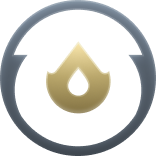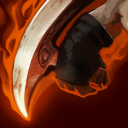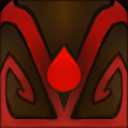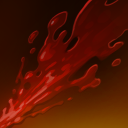Go With The Flow: Redefining Bloodseeker
jaitara_x
July 28, 2014
Introduction
Bloodseeker. Bludcyka. Noob hero. He goes by many names. I personally prefer Tomato-Sauce Maker. But none of these things are important. What's important is that he has a unique set of abilities that center around injury, and that they can be exploited fairly easily. For some reason, I tend to win a lot with Bloodseeker, so I try not to play him terribly often. That doesn't mean he's necessarily easy; rather, I just happen to have a fairly decent understanding of how he works. That, dear reader, is something that I hope to impart upon you.
Anything Bloodseeker kills heals him. Any enemy hero that is seriously wounded drives him crazy with strength and fervor. He can drive a creature into a killing frenzy that renders them unable to cast spells, or he can rupture their internals with a glance and render them unable to move without killing themselves. His peculiar set of battlefield control lends itself very much to a playstyle that rewards a mixture of focusing one target down at a time and damaging everybody at once. Above all else, however, it rewards quick wit, deft fingers, and a sharp eye for strategy. He's the kind of hero that takes advantages and magnifies them exponentially. He's the kind of beast that will wriggle into a small wound and make it fatal.
Ultimately, he is a character that does not create openings, but exploits what is already there to devastating effect. With that in mind, I will assume that you are playing Bloodseeker in lane, as this guide is written as such.
1. A Cut
Unless the opposing team is doing a frightening and cast-heavy lineup (like Shadow Shaman, Lina, and Skywrath Mage all on the same team, for instance), you will probably be safe in any lane not getting your silence until level 7. As you may have noticed, the starting build I've listed out assumes you will be last-hitting and denying like crazy, so following that line of thinking, you should conduct yourself accordingly. ANYTHING that Bloodseeker kills (except for Roshan, illusions, and constructs/ward units) will activate Bloodbath. Yes, that includes denying allied heroes. So while the enemy hero(es) in your lane waste time trying to harass you, just eat up those juicy kills. The Quelling blade will make it ridiculously easy work, thanks to Bloodseeker's high base damage, and you'll soon find that you are overtaking them in terms of both gold and experience. Build your Phase Boots as soon as possible. As you've noticed, I try to have Bloodbath maxed as early as possible simply because it's THE BEST passive in your arsenal. At level 3, you gain 110 HP from each Melee creep you last-hit or deny. THIS IS A FREE TANGO CHARGE!!! If you do well enough in lane, you may find that you still have plenty of Tango charges left over, which you should generously give out to other team mates.
When you start building into your Sange and Yasha, I want to make something very clear: get the Band of Elvenskin and the Belt of Strength first, THEN purchase the more expensive components later. 6 points each of Strength and Agility are great for the cost, and you will need BOTH of these stats for when you begin roaming at level 6. Simply purchase the Ogre Club and Blade of Alacrity as you get the gold, and don't actually have the courier deliver them to you until you have their respective recipes, as well. You need the inventory slots for one more item.
Upon leveling Rupture--right before, even--make an assessment. Where on the map will you find the lane that is most susceptible to your ultimate? Very frequently, the answer will be Mid, though it is possible that one of the other lanes will offer up an even more promising target. Buy a TP scroll. As soon as Rupture is up (and make sure to coordinate this with your team mates in advance), TP to the target area. Ideally, the lane will be pushed up against your tower, and the enemy hero(es) will be greedily nearby. Flank them. Rupture your target. Attack them until they're down to half, then Phase Boots > Auto-Attack THE OTHER hero, if available. Nothing will get in your way, and the bonus movement speed + damage from Thirst--combined with perhaps a stun or nuke from a cunning team mate--will be more than enough to bring them to half health. The enemy you ruptured won't be able to move anywhere without killing themselves. Assuming you went for a lane with two targets, your team mates will have killed the ruptured one and you will have either killed the second or sent them limping back to fountain. If it was a 2-on-1, then hopefully you got the kill. Surviving a well-coordinated Bloodseeker gank is possible, but not common, and often a source of frustration for the Bloodseeker player. Especially if it resulted from poor play on someone else's part.
Congratulations. You've made your first cut into the enemy's defenses. Repeat this process once or twice more, and you'll find yourself sitting on a Sange & Yasha before you realize it.
ITEM JUSTIFICATION: Phase Boots provide massive damage, as well as the ability to increase movement speed AND chase through units, things Bloodseeker desperately needs early on. Sange & Yasha accentuate this mobility and damage with an added dash of tankiness to ensure that you will survive long enough in fights to get that much-needed Bloodbath kill.
2. A Rupture
As team fights become more common, Bloodseeker finds easy pick-offs difficult. You need to assess the situation: what are they doing to counter you? How are they adapting to the early-game advantage Bloodseeker has? What natural niches are some of their heroes beginning to fill? If your problem is just a single nuker who is also relatively squishy, Blade Mail is certainly an acceptable response, or even against two nukers (rupture one, silence the other, and you're bound to get entertaining results. Just save the Blade Mail active for when the silenced target is no longer silenced). Blade Mail is also a wonderful response against carries like PA, who would just explode if they took even one of their own crits. Are they locking you down with tons of disable? Black King Bar certainly isn't a terrible choice. Is the enemy team just mobile as hell, good at harassing the rest of your team and then getting away by the skins of their teeth? Buy an Orb of Venom for a later Eye of Skadi, then work toward Radiance. Or are you just having trouble cracking open a tanky lineup? Consider getting a Crystalis to build into Daedalus later, and put extra points into Bloodrage. The results will be... messy.
Whatever you choose, it's important to understand that you are NOT a constant roamer. In fact, about 15 to 20 minutes in, you need to stick with your team at all costs. Bloodseeker is not very hard to pick off mid-game at all; his early-game Rupture is only scary, after all, because EVERYONE is really squishy at level 6. Later on, the team will likely be tanking up and/or playing more intelligently. Rupture doesn't allow you to go 3v1: it allows you to heavily punish someone for not staying still. When you're going up against 3 or even only 2 heroes mid-game, that doesn't mean a whole lot when you're the only one there. You are not the team. You're only part of it. A very, very thirsty part of it. Silence the heroes with the most dangerous abilities, rupture either the melee hero who's the biggest threat or the squishiest hero who will be brought down to 50% fastest, and let your team start nuking. Bloodseeker is at his finest when he has 2 to 3 stacks of Thirst. Once that happens, go in and finish them off, starting from least- to most-wounded. By level 9, that's a whopping +25 bonus damage per half health enemy, more than enough to keep you killing and healed.
Key point to take into consideration: you want to go in when there is already an advantage to press. A half-health Bloodseeker with 1 stack of thirst is nowhere near as scary as a full-health Bloodseeker with 2 stacks of thirst. Do your best to keep your team alive while they tenderize the meat for you, then jump right in and feast.
You'll also notice that this build doesn't level up Bloodrage much at all, and that's because it's a very, VERY situational skill. If you're facing a lineup that includes Skywrath Mage and/or Lina and/or Lion and/or Zeus, then by all means, put more levels into it. However, the bonus damage Bloodseeker gains simply isn't worth the mana cost. It only buffs BASE damage, which--even with lots of Agi items--isn't all that impressive compared to keeping an enemy nuker or disabler from casting their spells for that precious 6 seconds. I get a great deal more utility out of simply getting more health, mana, and agility.
ITEM JUSTIFICATION: Black King Bar is just amazing. Magic immunity can't be beat, especially on a hero like Bloodseeker who can out-DPS in the mid-game out of nowhere and regenerate hit points just as suddenly. Orb of Venom, for its price, is just an amazing chase item that complements fast-moving melee heroes. This goes double for it's exponentially-more expensive brother, Eye of Skadi. A clutch Blade Mail can actually save a Bloodseeker that is being burst down by squishy opponents, and for a hero that heals based on a percentage of the HP of what he kills, boosting his ability to kill even 1 tanky hero with crits is well worth the effort.
3. A Torrent
By now, if you are facing a competent enemy, both sides are just spiraling out of control in terms of damage, tankiness, immunity, etc. If not, you are either dominating (in which case, you probably don't need any more advice) or on the verge of defeat. In any case, Bloodseeker is still a good hero to have on your side.
Build Radiance. This, combined with whatever else you have slotted yourself out with, will work wonders in team fights, even if you're losing, if you follow this very specific strategy: only fight when there are enemy creeps nearby. The reason for this is simple. Every time Bloodseeker kills something--anything--he gets healed based on its max HP. It doesn't matter how he kills it. Even creeps killed with Radiance will work.
In a team fight where both sides are furiously struggling for supremacy, no one will really bother to focus down creeps when there are far more dangerous heroes to worry about. This healing becomes more reliable and goes up considerably in significance if you actually pause in the middle of a fight to score the last hit on a much-needed "healing creep". If you kill all 4 melee creeps and both ranged creeps over the course of a fight that occurs at the 30 minute mark, that's 760 health you just gained while simultaneously ripping open enemies (creeps gain increased health and damage every 7.5 minutes). That's NOT counting any possible hero deaths, either. If you have mega creeps in the lane against you, the healing actually goes UP by 33%. That's over 1,000 health over the course of a fight. I've actually utilized this strategy numerous times before, much to my opponents' dismay, and it works frighteningly well. The best way to get this started is to actually attack the creeps a bit before the fight begins, such that you have 1 or 2 low enough to be killed by Radiance by the time you start taking damage. Alternatively, simply staying within burn radius for a while will often be enough to do the trick.
At this point, a Heart of Tarrasque wouldn't be a bad item, either, if you have an open slot remaining. The larger your health pool, the longer you can stay alive to try and kill something to refill it, and when not killing things, the passive regeneration should assist marvelously in keeping you active around the map.
From there, just follow the same strategy as before: silence the dangerous spellcasters, Rupture whomever is squishiest, and let Bloodbath and Thirst do the rest. An intelligent team will assist in the nuking of squishies to boost your damage output further, and all other things equal, you should be a more or less unkillable death machine, darting around the battlefield with surgical precision to eliminate the most logical threats. As long as you keep killing things, you theoretically shouldn't die until either your team has won the fight or you are the last thing left for the enemy to kill.
ITEM JUSTIFICATION: Radiance isn't just a damage or farming item: it's also a regen item for Bloodseeker, especially in the presence of megacreeps. Heart of Tarrasque is also just very rarely a bad item on anyone, though again, Bloodseeker makes a strong contender for a Heart of Tarrasque carrier. So long as he survives long enough to kill one enemy, Bloodseeker replenishes a **** ton of health. Heart of Tarrasque gives him the added HP pool to guarantee that he lives long enough to do just that.
Wrapping It Up
Contrary to popular belief, it is my hope that this guide left you with the impression that Tomato-Sauce Maker is a team-oriented hero, rather than a solo roamer elite ninja ganker of ultra doom. In fact, in the presence of a friendly Bloodseeker player, I do my best to pick a nuker that will take full advantage of his passives, and am very rarely disappointed. There is nothing quite like the feeling of Thunderbolting a target twice as Zeus and watching Bloodseeker tear after him from the other side like a red, splattery race-car of butchery. There is also nothing quite like the feeling of watching a Bloodseeker buy Force Staff as their first item and scream angrily at everyone about why they're doing so poorly, or a Bloodseeker consistently charging in 1vX and screaming angrily... (repeat).
I have written this guide in the hopes of propagating more of that first experience and fewer of the latter two experiences. Bloodseeker can certainly be played as a pubstomp hero and achieve expected results. But he can also be played WELL. And as a player, nothing would please me more than to see a great deal more of that. With any luck, this guide will help you improve at least a little, if not a lot, and if it happens that none of the above are the case, I apologize in advance :) as always, good luck and have fun.
 Quelling Blade
Quelling Blade





































Quick Comment (13) View Comments
You need to log in before commenting.